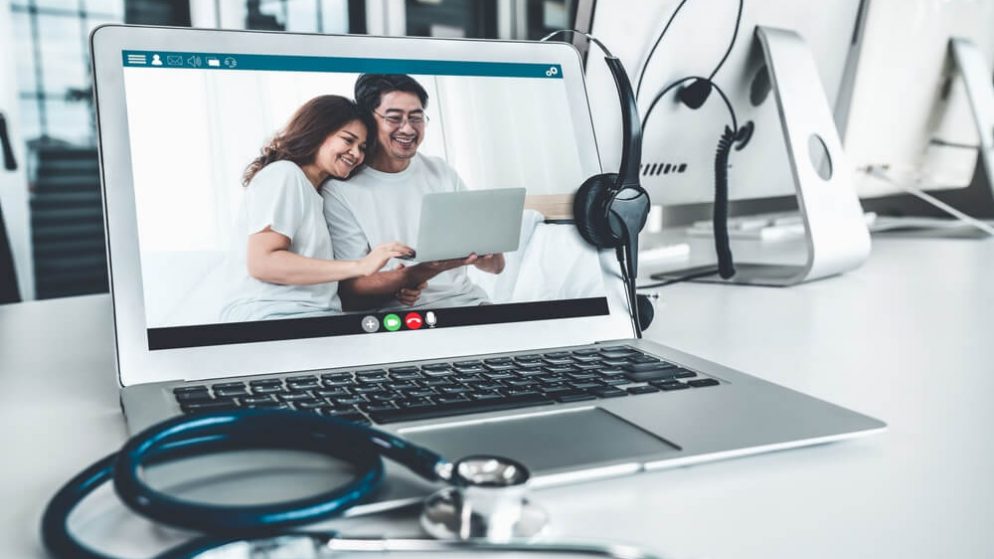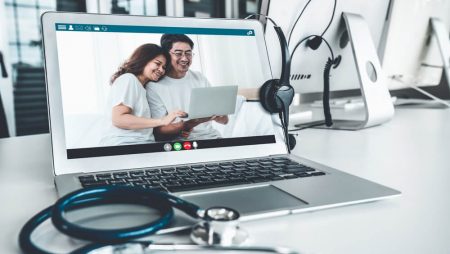



Get new exclusive access to healthcare business reports & breaking news




The sick care model is broken. Today’s sick care and reactive healthcare system is broken. 6 in 10 adults in America live with chronic disease. Healthcare must transform itself to proactively support individuals before the onset of disease and to offset the declining numbers of primary care doctors. The cost of healthcare in the United States is 2x that of other countries globally, representing almost 17% of GDP, yet, according to a report from the Commonwealth Fund, the United States overall healthcare system still ranks last among other developed, high-income nations, and Canada is not far behind with second last position.
So with Canada and the United States boasting some of the highest healthcare costs while still offering some of the least effective healthcare systems in the world, something needs to change.
Telehealth is not a new solution yet until COVID-19 began, most people were not familiar with telehealth, let alone comfortable making an appointment for a virtual care appointment. In fact, according to the National Center for Biotechnology Information, the first reference to telehealth dates all the way back to an 1879 article in the Lancet that mentions the idea of “using a telephone to reduce unnecessary [doctors] office visits”. Digital healthcare is on the rise. By 2025, the global digital health market is expected to be a $473 Billion industry but what should this booming digital healthcare market look like? If it’s simply the growth of our current infrastructure, or lack thereof, then we are poised for some major healthcare challenges.
Accelerated by the COVID-19 pandemic, healthcare has seen a dramatic shift and explosive growth fuelled by investments in health technology, especially in the telehealth space. If the fintech revolution following the 2008 recession is any indicator with growth in global fintech investments surpassing 20,000%+ from 2008 to 2019 (Accenture, 2019), then this investment growth is merely the first wave of many and we are destined to witness a transformed healthcare system. So, how do we improve the challenges of telehealth? Apply real-time data.
For the past decade, healthcare, retail, insurance, have all been focused on collecting data – big data. Most organizations have captured significant volumes of data but with the emergence and explosive growth of machine learning (ML) and artificial intelligence (AI) over the past few years, we are seeing terabytes, if not petabytes of data (or pebibytes for you sticklers for binary prefixes) that is now outdated, and no longer all that valuable. Sure, you can identify historical trends and changes in consumer behaviour but in order to power today’s increasingly sophisticated ML and AI models, businesses need consistent data feeds across a diverse range of sources to develop the most sophisticated models, regardless of whether they are being used for classification, regression or cluster modelling.
Sprout Open Health API’s scientifically tested and market validated features are built to enhance existing patient-facing apps to safely and securely capture patient health, lifestyle and behavioral data. Our proprietary RESTful API solution includes our Real-Time Health Risk Assessment™, multi-sync smartphone & wearable device integrations, engaging educational content, and more. Clinicians now have a real-time view of a patient’s health; patients gain a clear snapshot of their wellbeing with Sprout’s Overall Health Score that continually updates with new data inputs.
With continued investments in digital healthcare and real-time data, it will transform the global healthcare industry to become a more proactive and personalized patient experience while making healthcare more accessible to anyone, anywhere, at any time.
Patient-Doctor Synergy
Real-time data means each of the various doctors you may interact with over time will all have up-to-date information about you and your health history at any moment.
Equitable Care
Deliver high-quality, accessible care to patients anywhere with the necessary personal health data that you would not otherwise have available. Tap into the data that consumers are already collecting via wearables, smartphones, etc. for their benefit.
Proactive Care
Real-time data enables you to identify changes in health, lifestyle and behavior in order to intervene before health declines for more positive health outcomes and long-term cost savings in a healthcare system in dire need of efficiencies.
Personalized Care
Machine Learning & Artificial Intelligence powered healthcare enables providers to better understand each individual and deliver personalized care based on key indicators of positive health outcomes. For example, understanding that someone who historically suffers from depression is showing indicators of a potential depressed state can enable intervention and support at the exact time it is needed.
About Philip Hatcher
Philip Hatcher is the Director of Marketing at Sprout Wellness Solutions, a health technology company that empowers organizations to embrace wellbeing and improve the health and happiness of every user. Phil has an MBET and B.A. in Psychology. Phil has extensive experience leading digital strategy for both tech startups and nationally recognized brands.